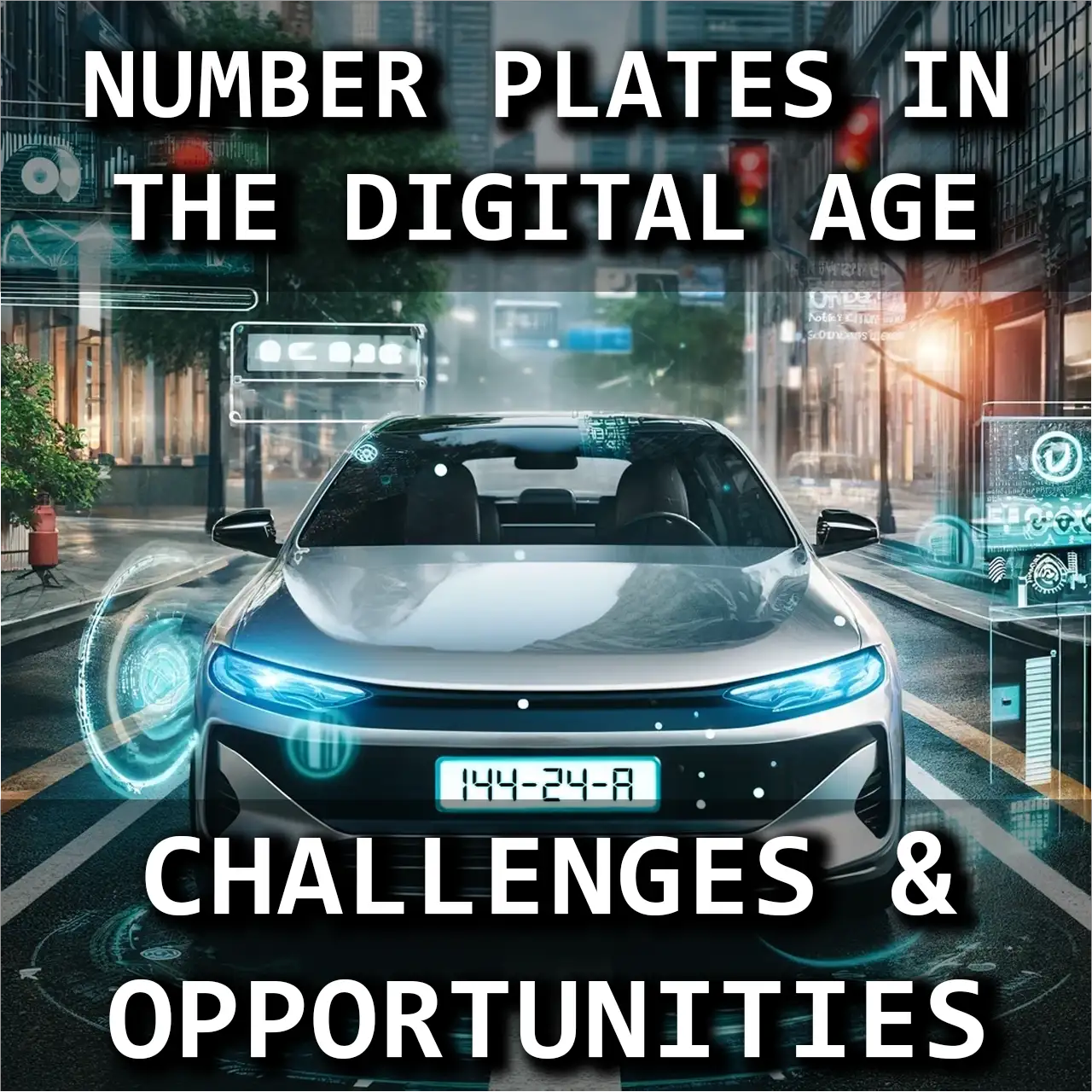As our world becomes increasingly digital, traditional systems and technologies are being transformed to keep pace with the changing landscape. Number plates, a long-standing fixture on vehicles around the globe, are no exception to this trend. While conventional plastic and metal plates have served their purpose well for decades, the digital age presents both challenges and opportunities for the evolution of vehicle identification.
In this article, we’ll explore the potential future of number plates in the digital era, examining the obstacles and benefits that come with embracing technological advancements.
The Challenges of Digitising Number Plates
The transition from physical to digital number plates is not without its challenges. Some of the main concerns include:
- Standardisation: Creating a universal digital platform that accommodates diverse number plate requirements across countries and regions.
- Infrastructure: Developing and maintaining the necessary networks and systems to support digital plates.
- Security: Protecting digital number plate data from cyber threats and unauthorised access.
- Adoption: Encouraging widespread acceptance and use of digital plates among vehicle owners and authorities.
One of the primary challenges is the issue of standardisation. With various countries and even states or provinces within countries having their own unique number plate requirements, creating a universal digital platform for vehicle identification can be a complex task.
Another challenge lies in the infrastructure required to support digital number plates. For these plates to function effectively, they must be able to communicate with various systems, such as traffic cameras, toll booths, and parking meters. This requires a robust network of sensors, receivers, and data processing centers, which can be costly to implement and maintain.
The Opportunities Presented by Digital Number Plates
Despite the challenges, the shift towards digital number plates also presents numerous opportunities for enhanced vehicle identification, data collection, and service delivery.
| Benefit | Description |
|---|---|
| Dynamic Information | Digital plates can display real-time updates, such as traffic alerts, amber alerts, or personalised messages |
| Efficient Vehicle Tracking | Integration with GPS and location-based technologies enables real-time data on vehicle movements |
| Streamlined Administration | Digital plates can automatically update registration information and facilitate convenient payment systems |
One of the key benefits of digital plates is their ability to display dynamic information. Unlike traditional plates, which are limited to static characters, digital plates can show real-time updates, such as traffic alerts, amber alerts, or even personalised messages.
Digital number plates can also enable more efficient vehicle tracking and management. By integrating with GPS and other location-based technologies, digital plates can provide real-time data on vehicle movements, aiding in traffic management, emergency response, and crime prevention. This data can also be used to optimise road infrastructure, identify areas in need of maintenance, and inform future transportation planning.
Preparing for the Future with High-Quality Number Plates
As the world moves towards a more digital future, it’s essential for vehicle owners to stay ahead of the curve by investing in high-quality, durable number plates that can bridge the gap between traditional and emerging technologies. SurePlates, a leading provider of DVLA-approved 4D laser cut and gel resin plates, offers a range of innovative number plate solutions that combine the best of both worlds.
By choosing SurePlates, vehicle owners can ensure that their number plates are not only compliant with current DVLA regulations but also well-positioned to adapt to the digital age. The company’s commitment to quality, durability, and customer service means that our plates will continue to serve their purpose effectively, even as the landscape of vehicle identification evolves.
Further Reading
You may also be interested in: The Role of Number Plates in Smart City Initiatives
Case Study: Digital Number Plates in California
In 2018, California became the first U.S. state to legalise the use of digital number plates. The digital plates, developed by Reviver Auto, feature a display that can show the vehicle’s registration information, as well as other dynamic messages and alerts. The plates are connected to a cellular network, allowing for real-time updates and communication with various systems.

While the adoption of digital number plates in California is still in its early stages, the pilot program has demonstrated the potential benefits of this technology. For example, the plates have streamlined the registration renewal process, allowing vehicle owners to update their registration information automatically.
The California digital number plate pilot program serves as a valuable case study for the future of vehicle identification in the digital age. As more jurisdictions explore the possibilities of digital plates, the lessons learned from this initiative will help guide the development and implementation of similar programs around the world.
Summary
As the digital age continues to transform every aspect of our lives, the evolution of number plates is an inevitable and exciting development. While the transition from physical to digital plates presents certain challenges, such as standardisation, infrastructure, and security, the opportunities for enhanced vehicle identification, data collection, and service delivery are immense.
By investing in high-quality, adaptable number plate solutions like those offered by SurePlates, vehicle owners can ensure that they are well-prepared for the digital future. As the world embraces the potential of connected vehicles and smart cities, those who stay ahead of the curve will be best positioned to reap the benefits of this transformative era.
Ultimately, the future of number plates in the digital age will be shaped by a combination of technological innovation, regulatory adaptation, and public acceptance. By working together to address the challenges and seize the opportunities presented by this shift, we can create a more efficient, secure, and data-driven vehicle identification system that benefits everyone on the road.

